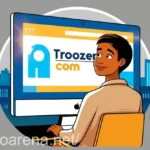Owning and operating an automobile in the United States is a privilege, and it opens the world to you for work, school, and fun. Over 243 million licensed drivers are on the road nationwide, and your kids will join their ranks in the future.
Handing the keys over to the new driver in your family is daunting and nerve-racking, but it’s part of being an adult and helping to raise your children. Knowing what you can do to help your teen driver learn the ropes and gain the necessary knowledge for defensive driving is vital.
The good news is that you’ve come to the perfect resource to learn about the driving and parenting tips you can use to educate your new driver and help them succeed. Continue reading to help your child get their driver’s license today!
Set a Positive Example
As a parent, you have opportunities to provide an example to your kids of the proper ways to conduct oneself. Use each time you’re driving your children somewhere as an opportunity to help them grow and learn.
Displaying dangerous behavior while driving, like texting and driving or being distracted by the infotainment system, sets a negative example for your kids. Your behavior will normalize those activities.
Remember to buckle your seatbelt each time you’re preparing to drive. Providing an environment where the entire focus is on the road and the other cars surrounding you will set the perfect example for your new driver.
Create the Driving Rules
In addition to the laws and regulations enforced by law enforcement, it’s wise to create a set of rules for your teen drivers. Driving is a privilege rather than a right. Failure to drive safely will result in losing your driving privileges.
Create and enforce rules for teen drivers when they get their driver’s license and hit the open road alone. If your teen driver is issued a speeding ticket or a citation for texting and driving, the rules in your home must be enforced.
A reasonable agreement is that your teen loses their driver’s license for a month. Consider creating a family driving agreement when your kids are old enough to drive.
The internet offers several templates you can use to cover your bases. It’s a mature agreement to help your teen driver stick to the rules and safe driving techniques you’ve taught them. Customize the deal to suit your family and hold your new driver accountable for their actions and decisions.
Find the Ideal Technology
Technology has changed the game for parents worried about their new driver. It’s a double-edged sword, as tech in the car can result in distracted drivers. The other side involves tracking your teen driver’s behavior on the road.
Several apps monitor your new driver’s speed and location when driving. Another valuable information provided by these app services includes phone usage while driving.
Include the tracking apps as part of the family driving agreement. Look for tracking apps that track instances of hard acceleration and braking. You can use the information to determine if your new driver is adhering to the agreement in your family contract.
Coaching Opportunities
When riding with your new driver, view it as a learning opportunity and put yourself as a teacher or coach. Look for things your teen driver is doing well and point out areas where you see room for improvement.
The goal should be to provide constructive criticism to your child. The worst thing you can do is become negative or frustrated with your teen driver when riding along.
Nothing will kill your new driver’s enthusiasm and excitement for driving like negative comments and harsh criticism. Do your best to remain calm and positive throughout the experience. It’s an essential step to help your kid grow and one of the crucial parenting tips to stick to.
Use Incremental Progress
An inexperienced new driver is likelier to get in a car accident. Driving is much more than keeping the car within the lanes. You must monitor the location of other drivers around you, road conditions, hazards, and wild animals.
You’re also in a vulnerable state for distractions when behind the wheel. When your new driver earns their driver’s permit, use incremental progress to help them gain experience and confidence.
You don’t want your child to hit the freeway during rush hour minutes after getting their learner’s permit. You’ll put them in a position where success is fleeting, and danger is abundant.
Incremental progress will help your teen driver learn to drive at night, in the rain, and on different types of roads. After they get comfortable, let your child drive more often to appointments and other errands.
Guide Your New Driver Through Year One
The most precarious year for new drivers is the first year. Your goal as a compassionate and caring parent is to guide your new driver through that year with patience and trust. Limit your new driver’s driving time during the first year after getting a license.
The best way to limit exposure to dangerous driving situations is to create stipulations in the family driving contract. Make rules about unnecessary driving during periods of heavier traffic.
Statistics show that 16-year-old drivers are at the highest risk for car accident injuries. The best way to help your teen driver grow and learn is to provide gradual experience in controlled driving environments. By guiding them through the first year, you’ll lower their risk of getting in a car accident.
Sort Car Insurance for Teens
The reality of welcoming a teen driver into the family is that you take a significant financial risk. You’re risking property damage to the car they drive and medical bills if a car accident occurs.
One of the first things you should do after your teen earns their driver’s license is to visit your car insurance provider. You want to ensure your child has ample car insurance coverage to protect against property damage and medical bills if an accident occurs.
Your medical bills and legal fees will mount quickly, and insurance for teens is the best investment to protect your family and children. You can also ask your insurance agent to sit down and chat with your new driver about the financial ramifications of car accidents and driving infractions.
Money talks and your new driver will be more likely to practice defensive driving. It’s an excellent way to guide your new teen toward healthy, safe driving habits.
Invest in a Family Car
Handing the keys to your favorite car to your new driver is stressful. You’re trusting your teen driver that they won’t damage the vehicle or put it under duress.
If you want peace of mind about your favorite car, consider purchasing a family car that all drivers can share and use. New drivers who share a car with other family members are likelier to drive with caution and care.
You’ll also save money on your car insurance for teens by facing lower monthly premiums. A family car is a win-win situation for all parties.
Limit the Number of Passengers
Loading the car with your best friends results in some of the longest-lasting memories, but it’s also dangerous for a new driver. The more teen passengers in the vehicle, the higher the odds of an accident.
The best solution is to limit the number of passengers your teen driver can have in the car with them. All it takes is one distracting passenger to put your driver in a dangerous situation.
Talk with your spouse about limiting the number of passengers in the car. It will disappoint your teen, but it’s in their best interests. You’ll make a decision to ensure their safety after earning their driver’s license.
Create Time for More Training
Learning to drive doesn’t end when your new driver receives their driver’s license. Driving is among the most dangerous tasks your new driver will experience. There’s much to learn; your teen driver should learn these driving tips in controlled environments instead of on the open road.
Research driving programs in your area for hands-on training from driving experts. You can also accompany your child to an open parking lot to work on driving basics and sharpen skills.
The course and extra practice will boost confidence and ensure a safe driving experience. It’s also an excellent way to open new conversations with your child about driving. You’ll feel more comfortable when your new driver grabs the keys and heads down the road.
Learn to Prepare Your New Driver Today
Welcoming a new driver into the family is equal parts scary and exciting, as it’s a sign your children are beginning to grow up. Combining parenting and driving tips is the best way to help your child learn after earning their driver’s license.
Limit distractions and set a positive example for your teen driver. Invest in a family car and determine the best insurance for teens.
When becoming a parent, looking out for your child’s well-being is your top priority. Use our Health guides and articles to provide a healthy environment for your child’s wellness today!






